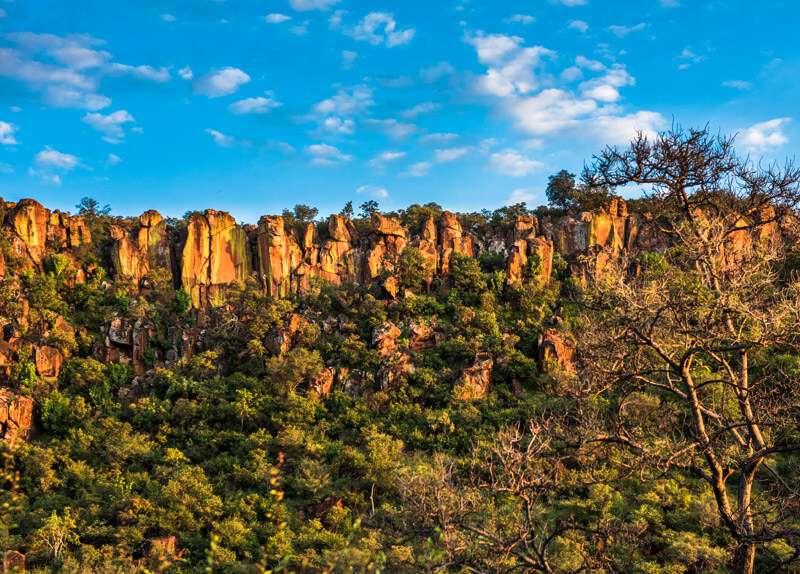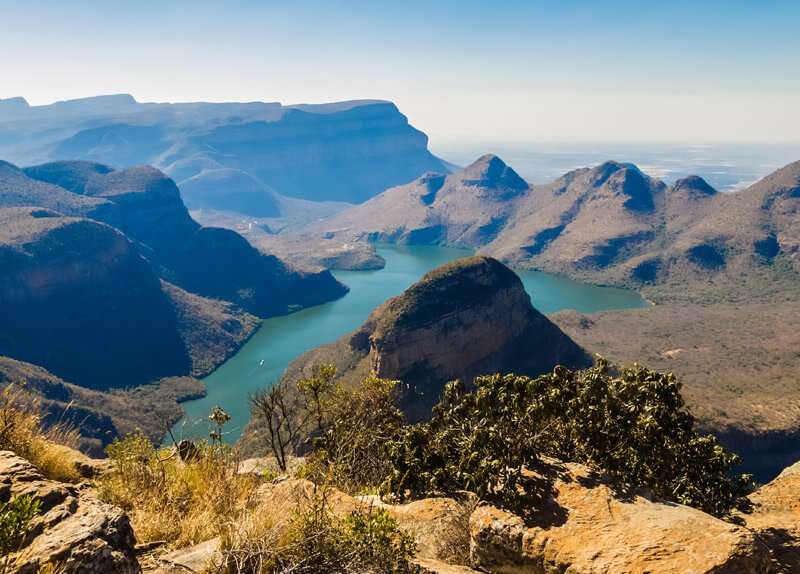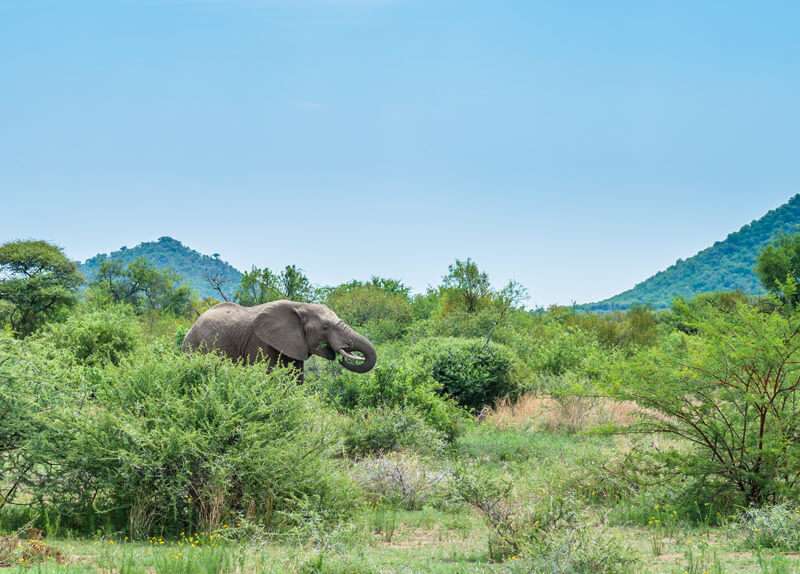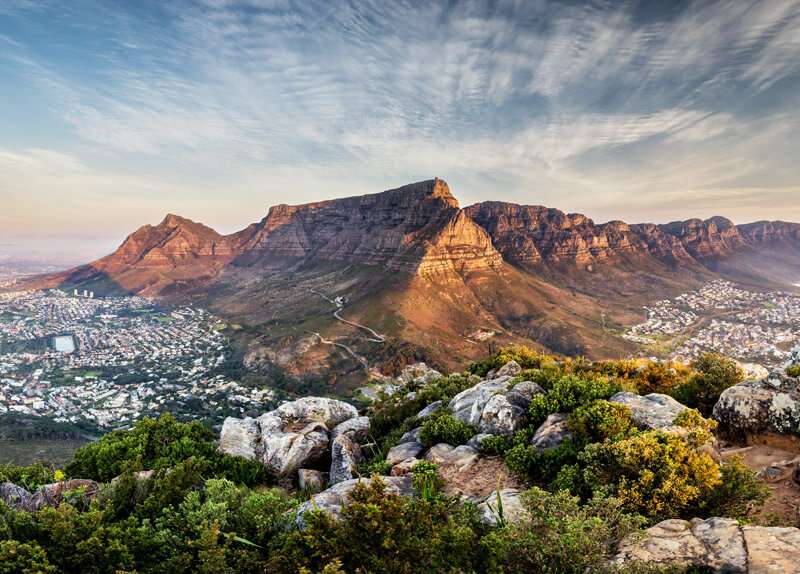Guests that visit Olifants will be exposed to an unforgettable window of Africa. The camp is situated a top a hill which towers several hundred feet over the Olifants river.
Views from the lookout platforms allow one to see the river below, just as a soaring eagle would survey it, as it hunts from the skies.
General Information
Climate: Kruger is in a summer rainfall area. Such precipitation is usually convectional and can result in heavy downpours. The summer months (October to April) are hot and often balmy.
Winters are warm and mild, although visitors going on night-drives will require warm clothing.
Day Visitors: Olifants has a designated picnic area for day visitors. It is located behind the camp’s reception offices. Clear signage in the camp will direct you. Gass cooking facilities are available for rent.
Areas Of Special Interest
In camp:
Mountain Bike Trails: The procedure for MTB Trails is very similar to the guided bush walks. There is place for a maximum of 6 participants per trail. Two qualified and armed field guides will lead the trails. Olifants Camp will supply the mountain bikes. Backpacks, water bottles, bicycle helmets and snacks will also be provided. A full bush interpretation will be done on the trail (interesting nature signs and wild life sightings).
Ndlovu Restaurant: Named after the elephant (like the camp) the restaurant is situated to the right of the viewpoint and dedicated chefs prepare traditional South African cuisine in black cast iron pots from the buffet. There is always plenty to choose from, but remember to leave space for the freshly baked desserts and fresh fruits and salads.
Out of camp:
- N’wamanzi Lookout
- Olifants Lookout
- Engelhard Dam
- Balule Bridge
- Ngotso Pan
- Baobab Tree on Gravel Road to Letaba
Flora and Fauna
Game: The Olifants area plays host to most of the Kruger National Park’s classic larger game. As the name of the camp suggests, elephant are common in the area. Baboon and vervet monkey both inhabit the camp, as do fruit bats and thick-tailed bush babies at night. Lion and leopard are regularly seen on game drives. Cape clawless otter has been seen from the Olifants lookout point on the gravel road to Letaba.
Birding: Two birds to look out for on the Olifants River are white-fronted and white-crowned plover, both of which can be seen in the riverbed. The bridges on the main tarred road and at Balule are the best places to look for these species. Search the riparian trees on the Olifants River near Balule for the pel’s fishing owl. It is occasionally seen on night drives from the low level bridge. This low level bridge adjacent Balule is an extremely productive venue. During the day one will get close encounters with several stork, heron and kingfisher species while the lure of the fishing owl by night is a big incentive. Only a few meters away, a white-backed night heron is sometimes seen. Camp bird-life in Olifants like all camps is busy. Red-winged starlings are particularly prominent. Trumpeter hornbills and pied barbet are regularly seen in camp, and when the many aloe plants in camp are in flower, they act as a magnet for sunbirds. Rufous-bellied heron has been recorded on the Olifants River.
Vegetation: Olifants is situated in rugged veld on rhyolite / basalt soil. Lowveld cluster-leaf, raisin bush and mopane are all prominent in the area. Just south of the river is the transition zone between thornveld and the mopane belt. In the camp itself there is a plethora of trees and plants, some of which are scarce elsewhere in the Kruger National Park. A variety of aloe species are a real highlight. Next to the filling station there is a sesame bush. This is probably the only accessible place in the Kruger National Park where it can be seen. In early spring the sjambok pod (yellow flowers) and weeping boerboon (red flowers) are both in bloom so the veld is a contrast of colour. Also look out for tree euphorbia.
Accommodation
Bungalows: 2, 3 or 4 bedrooms, equipped with ablutions (most with showers, but some with baths), air-conditioning, some have kitchenettes while others have communal ablutions. Some are located on the perimeter edge with a wonderful vista of the river below.
Guest Cottages: 4 bed, 2 bed rooms Guest Houses: Nshawu and Lebombo – 8 bed exclusive view and location, fully equipped, four 2-bed bedrooms (ask if you would like a double bed), en-suite bathrooms, kitchen, lounge, dining room, several lookout decks and television.
Activities
- Morning, Sunset and Night Game Drives
- Morning and Afternoon Guided Bush Walks
- Bush Breakfast and Braai (Barbecue)
- Mountain Bike Trails (New product - Morning Afternoon and Full day)
Facilities:
- Information at Reception
- Public Telephones
- Post Box
- Restaurant
- Curio /grocery Shop
- Basic First Aid Assistance
- Cutlery and Plates Hamper
- Emergency Road Service
- Petrol Station
- Laundromat
- DSTV in Guest Houses and TV Lounge Only
- Forex
- Communal Kitchens
- Picnic Facilities - with cadac gas braais for rent
5 Things to Seek:
- Elephant
- Lion
- Hippopotamus
- Nile Crocodile
- Martial Eagle









